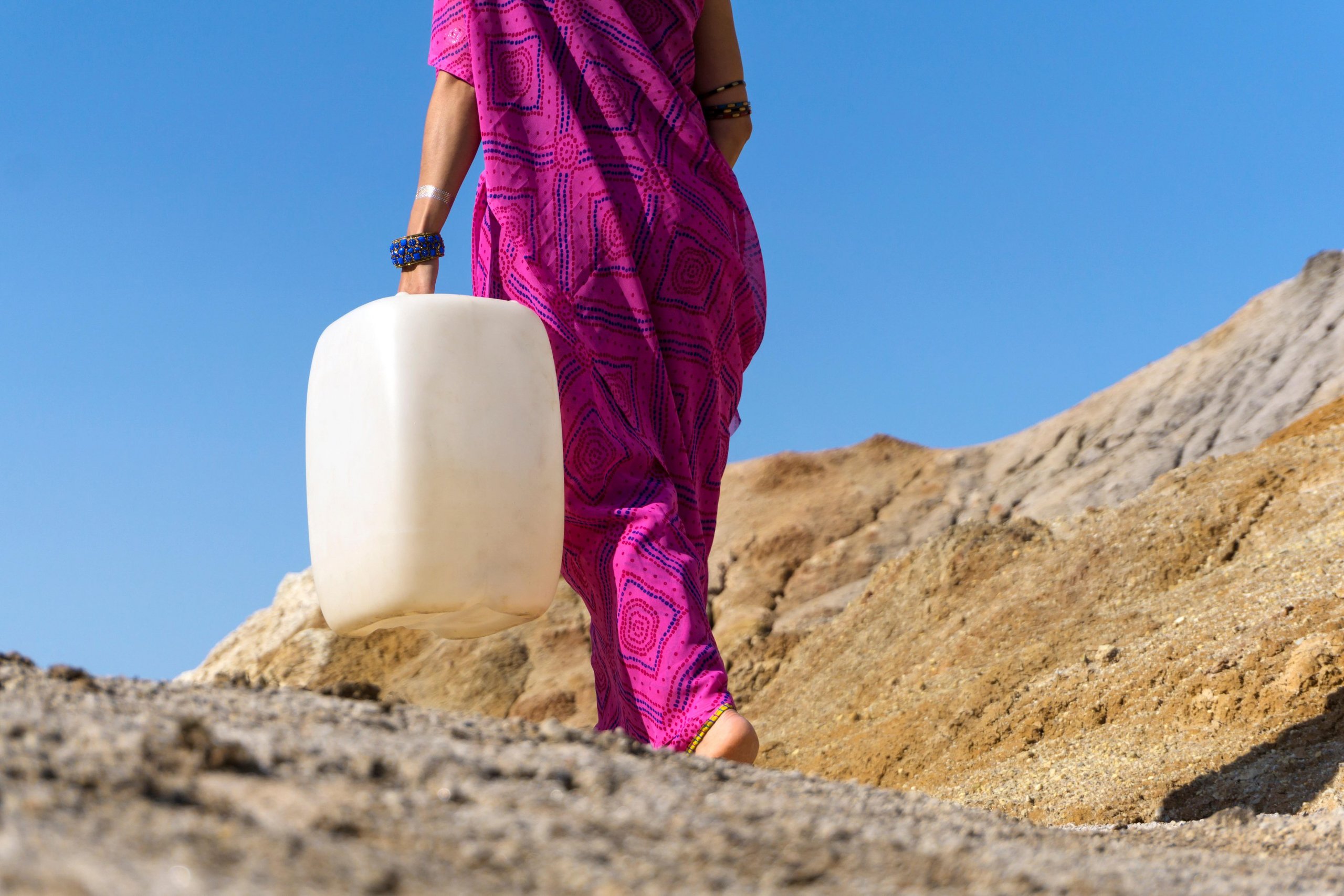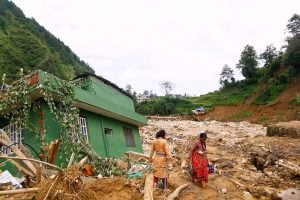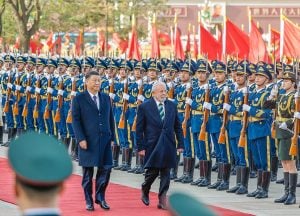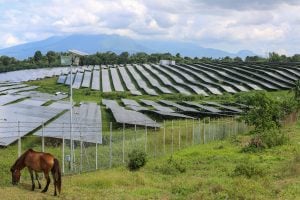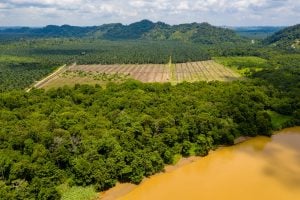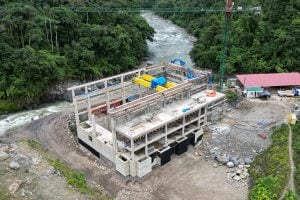Every evening, Abdullah Achakzai, director of the Environmental Volunteer Network (EVN), encounters the same grim reality as he returns home from work in Kabul. Queues of people, mostly children, wait for hours to collect water from private tankers. With piped water in short supply, many Afghans rely on these tankers to meet basic household needs.
In recent years, the number of people waiting in line has grown steadily, says Achakzai. “The situation is worse compared to last year,” he told Dialogue Earth. “We anticipate the coming years will be even more critical, with underground water levels continuing to decline.”
Most Afghan households rely on personal wells for drinking, cooking and agriculture. According to an August 2024 report by the National Statistics Directorate, there are approximately 310,000 drilled wells across the country. But Achakzai explains that an EVN survey conducted in July shared with Dialogue Earth found that the drought has made these wells less reliable. “Wells drilled in previous years to a depth of 200m are now running dry, forcing many residents, particularly those in high-rise buildings, to drill wells as deep as 300m or more to access water,” he said.
However, Achakzai warned that as “underground water levels are rapidly decreasing” even these deep wells are unlikely to offer a long-term solution. A 2023 UN report confirmed that “49% of boreholes assessed in Kabul Province are dry, and the remaining boreholes are functioning at only 60% efficiency.”
Increasing climate shocks
“Climate change is disrupting weather patterns [in unprecedented ways],” said Mohammad Daud Hamidi, an Afghan water expert, who has spent years studying the country’s water insecurity. Afghanistan, already battered by conflict and instability, has experienced three consecutive years of severe drought since 2021.
Afghanistan’s water supply largely depends on the seasonal snow melt from its mountains, which feeds into major rivers. “However, changes in snowfall patterns are altering surface water availability leading to increased reliance on groundwater resources, for both domestic use and irrigation,” Hamidi said. “These resources are being depleted faster than they can be replenished.”
In rural Afghanistan, the effects of the drought are particularly pronounced, leading to increased migration to cities, increasing pressure on urban water supplies. Industrial activities are also adding pressure. Hamidi singled out the mining industry, where there has been a “recent proliferation of contracts without proper environmental impact assessments.”
Yet droughts are not the only climate-related disaster Afghanistan faces. They are often followed by flash floods. Since May, over 250 people have died and nearly 120,000 have been affected by flash floods in northern and eastern Afghanistan, according to the UN Office for the Coordination of Humanitarian Affairs [OCHA].
“With an increase in temperature [due to climate change], air can retain more water,” explained Najibullah Sadid, an Afghan water management expert at the University of Stuttgart. “Even a degree of increase in air temperature, allows air to retain 7% more water, forming heavier clouds, which in turn can cause thunderstorms, localised heavy rains and floods,” he said. Many of Afghanistan’s worst floods in recent years, he noted, occurred during high-temperature periods, including the 2022 floods in Khoshi, Logar and the 2020 floods in Charikar, Parwan, which claimed over 100 lives.
Human impact
Since the Taliban takeover in 2021, Afghanistan has faced diplomatic isolation, with international organisations withdrawing, making it difficult to gather comprehensive data on the impact of these environmental crises. “It’s challenging to track [the full scope of the problem]” said Ahmad Kassas, country director at NGO International Medical Corp (IMC). However, he said the impact could be measured in other ways, including “rising caseloads of water-related diseases in our health facilities.”
Unsafe water is also linked to rising malnutrition rates. “One report suggests more than 3.2 million children and 840,000 pregnant and lactating women are suffering from malnutrition,” Kassas said. He recounted a case from Saripul Province, where communities rely on salty, undrinkable water. “People often come to our medical facilities simply to drink water,” he said, noting that this unexpected demand for clean water prompted IMC to include water distribution as part of its services.
To address some of the water scarcity challenges, Kassas explained that IMC has also helped with the construction of solar-powered water systems, hand pumps and irrigation canals, to mitigate the immediate crises, but the scale of the need is overwhelming.
Women among the worst affected
The burden of water scarcity falls disproportionately on women, said Shogofa Sultani, general director of Step to Brightness of Afghanistan Organisation (SBAO), a civil society organisation. “Men work outside the home and can therefore seek other sources of drinking water. But most Afghan women who are housebound, need access to water for all household chores,” she explained.
If we go to someone’s house or have guests, the first thing we ask each other is, ‘Do you have water?’Shogofa Sultani, general director of Step to Brightness of Afghanistan Organisation
Sultani’s organisation, once focused on various civic matters, is increasingly shifting its efforts toward researching and raising awareness about Afghanistan’s growing climate challenges. “With reduced access to public water, more money has to be spent on buying containers of water — which can cost anywhere between AFN 20-50 [USD 0.30-0.70] for 20 litres,” Sultani told Dialogue Earth. Larger families increasingly need to buy more water to meet their daily needs. “This is putting pressure on many families, especially those that are struggling financially,” she added.
Poverty affects more than 90% of Afghans, with at least 23.7 million people— more than half the population — in need of humanitarian assistance in 2024. “Every family I know is having daily conversations with each other and their communities about water. If we go to someone’s house or have guests, the first thing we ask each other is, ‘Do you have water?’. Everyone is worried about how they will obtain water the following day,” Sultani said.
Depleting human and financial resources
Despite the frequency of floods, Sadid sees a potential opportunity. “If we can store [the water from floods], it could help recharge our groundwater and improve soil moisture and vegetation cover,” he suggested.
Commenting on the Qosh Tepa canal project, which the current regime has been pursuing and is reportedly halfway complete, Sadid explained that successful completion could triple Afghanistan’s water intake from the Amu Darya river basin. This would significantly improve water access in northern Afghanistan, where water is especially scarce and where agriculture is dependent on spring rain. The project, he added, has the potential to “transform fertile rainfed agricultural land into permanent arable land,” boosting food and creating much-needed jobs.
However, such an endeavour requires ongoing financial resources and investment, which have also been in short supply since the Taliban took power. Sadid warned that the canal’s construction is becoming increasingly expensive, with much of the work to date focused on excavation. “I’m not sure how the Taliban can secure the financial resources [to continue],” he said, pointing to the challenges posed by the Taliban’s international isolation and sanctions.
Hamidi echoed these concerns, adding that Afghanistan’s water infrastructure has long been neglected. “Due to the prolonged war and other critical issues, water infrastructure in Afghanistan has not received the attention it deserves.”
The brain-drain following the takeover, as people fled the Taliban, has also exacerbated the situation, Hamidi said, “leaving significant challenges in governance, technical expertise and capacity-building to effectively address the issues.” Even traditional systems like the Karez, a centuries-old network of community-maintained canals have fallen into disrepair. “Traditional Karez systems and natural water sources are no longer providing water, largely due to the widespread use of drilled wells for agriculture,” Achakzai said.
Excluded from the climate conversation
Amid these cascading crises, Afghanistan remains largely excluded from international climate discussions and cut off from funds which could help build resilience to climate shocks. Despite being ranked sixth among countries most affected by climate impacts on the Global Climate Risk Index in 2019, Afghanistan had no official representation at COP27, the annual UN climate conference. Achakzai attended the event as Afghanistan’s sole, unofficial representative.
Afghanistan’s carbon emissions in 2019 were 0.3 metric tonnes, compared to a global average of 4.6 metric tonnes. Yet, the country is disproportionately affected by climate change, and its exclusion from international climate funds and adaptation programmes leaves it dangerously vulnerable to future shocks.
Hamidi warned that unless immediate steps are taken, Afghanistan’s water crisis could easily spill across its borders as people struggle with repeated disasters. While dealing with water insecurity is a complex task, “addressing immediate water challenges is crucial, such as [the development of] dams and [their] maintenance,” he said.
“Reviving and maintaining traditional water systems like the Karez, which have historically provided reliable water is crucial. These underground channels minimise evaporation and can help sustain communities, especially in rural areas,” said Achakzai. “A long-term strategy would involve collaborating with local communities.”
He added: “It would not only help manage the limited aid provided to Afghanistan, but raise awareness about water issues to help prepare people for future shocks.”
